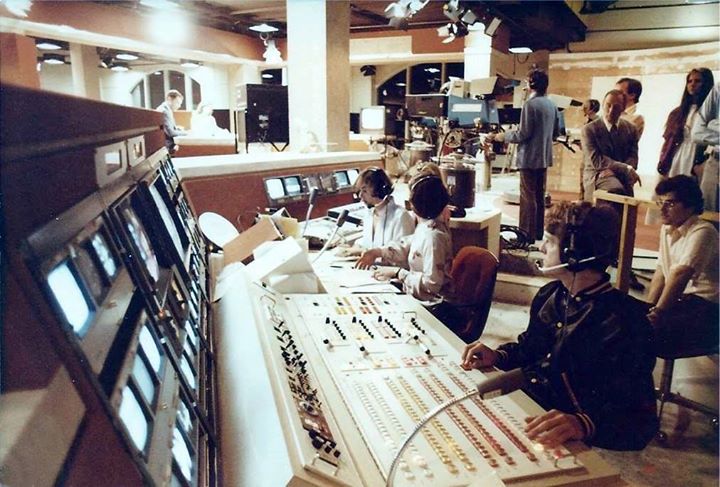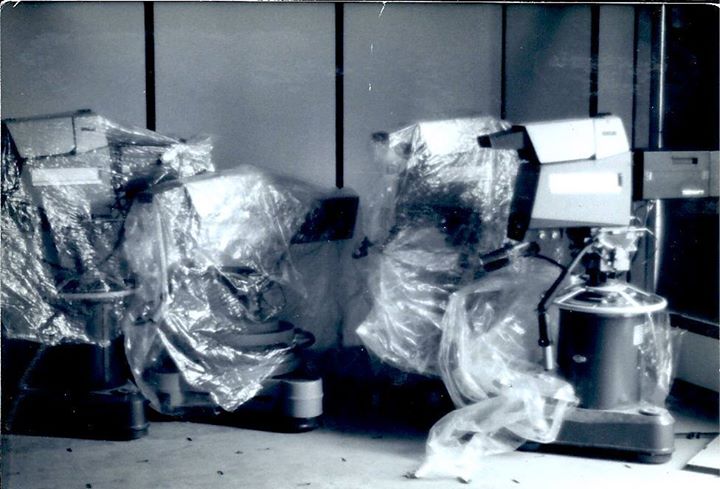- Home
- TV History
- Network Studios History
- Cameras
- Archives
- Viewseum
- About / Comments
Skip to content
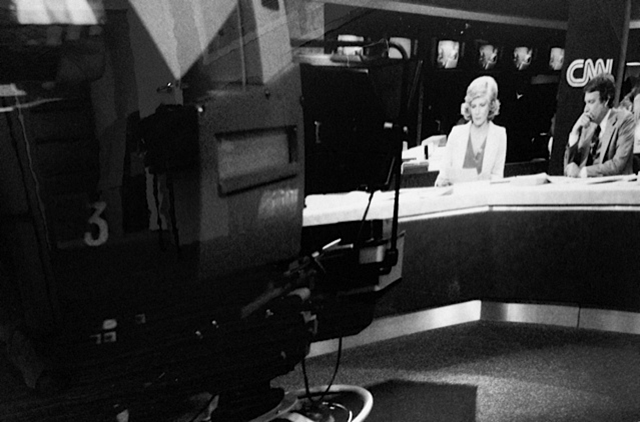



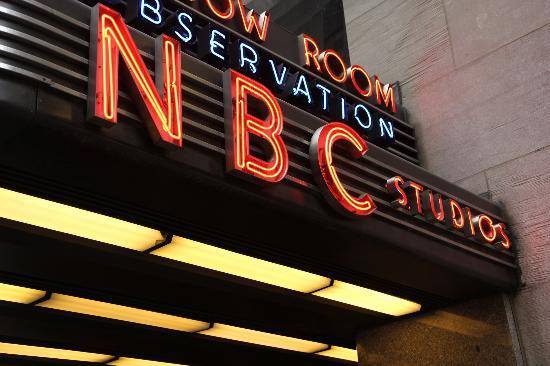

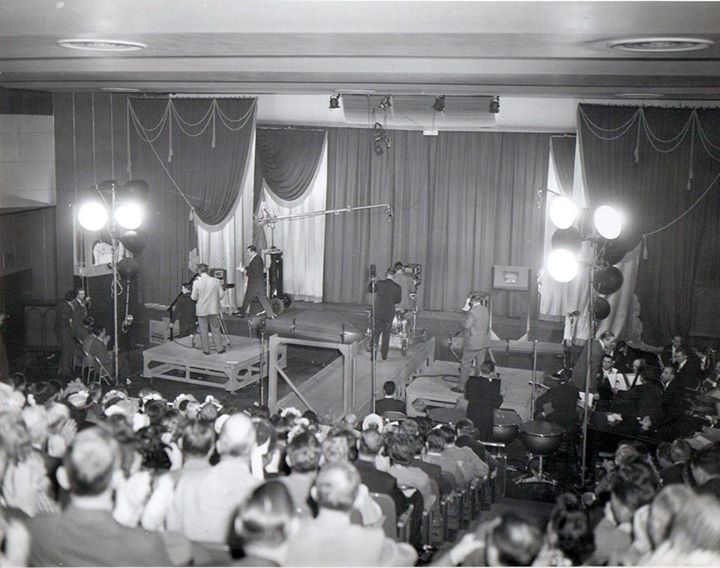


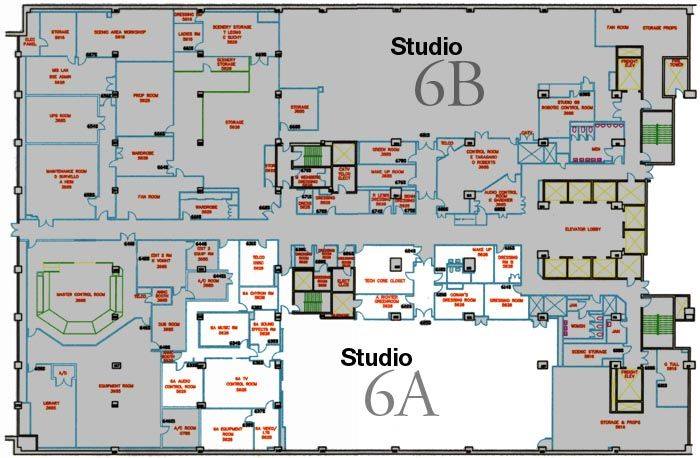


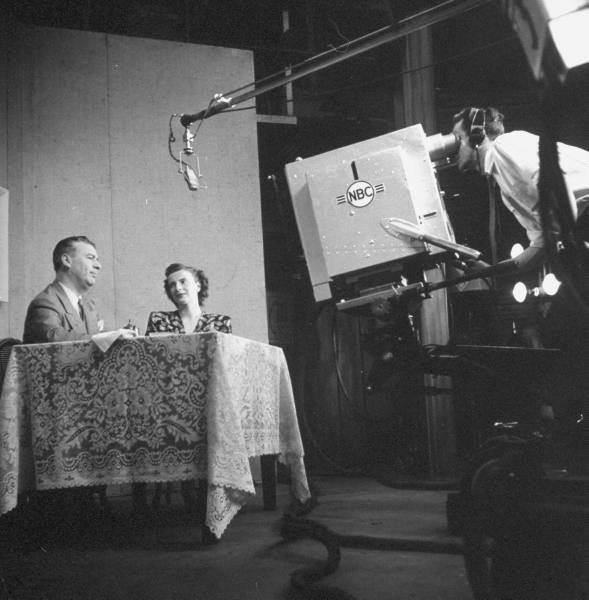





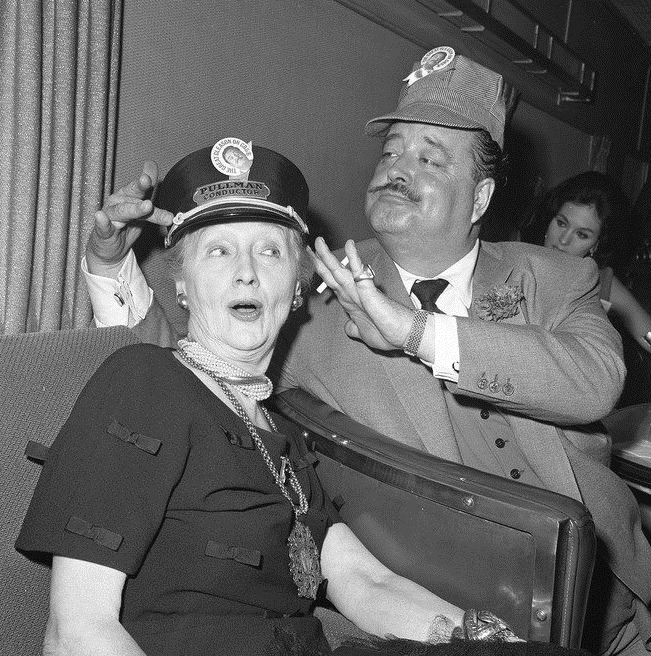


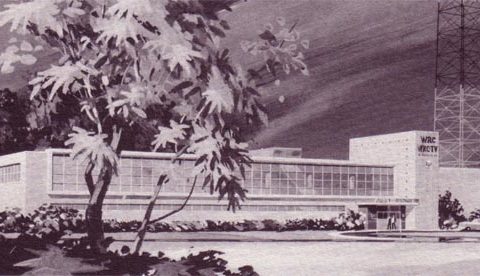


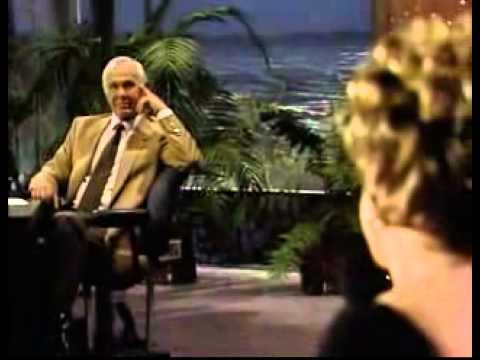

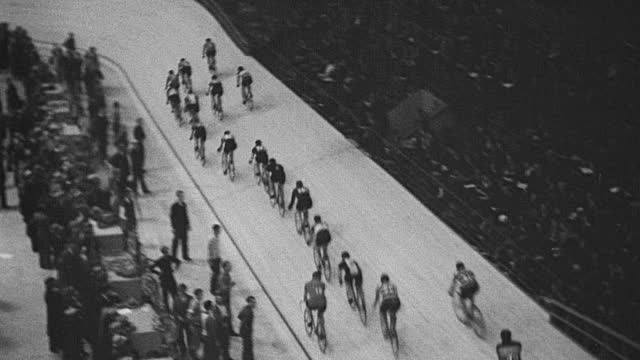

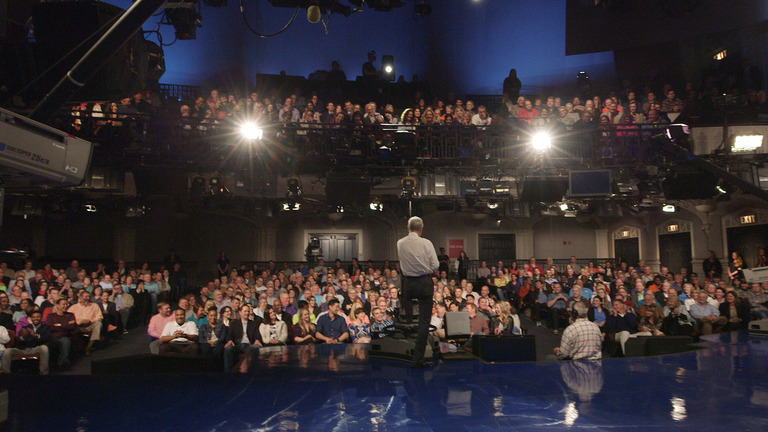

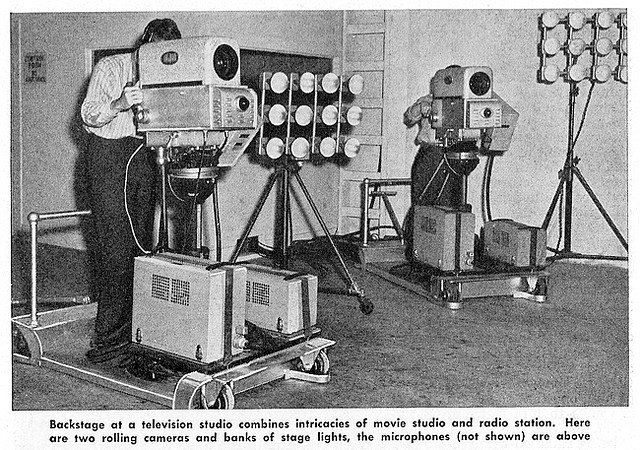

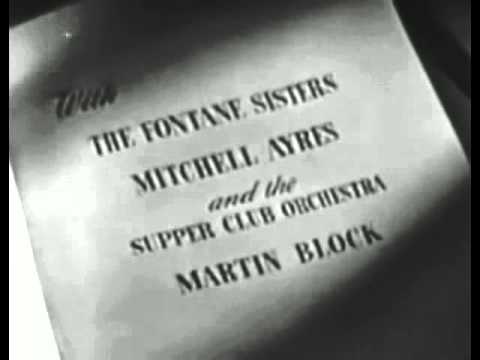

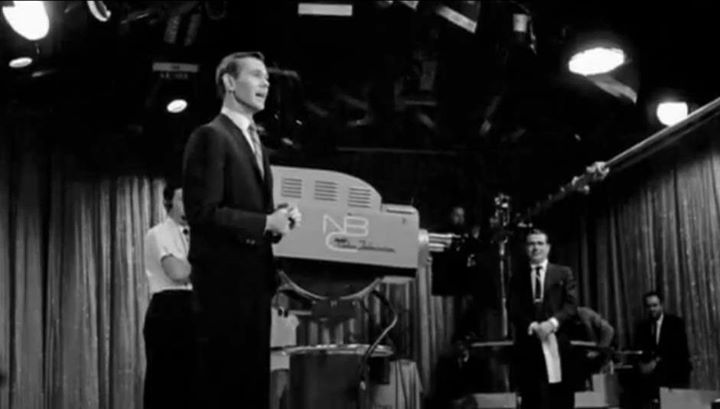

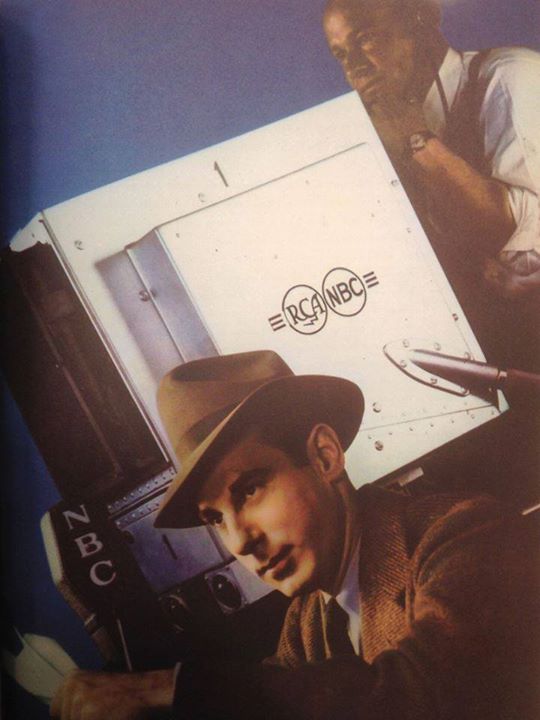

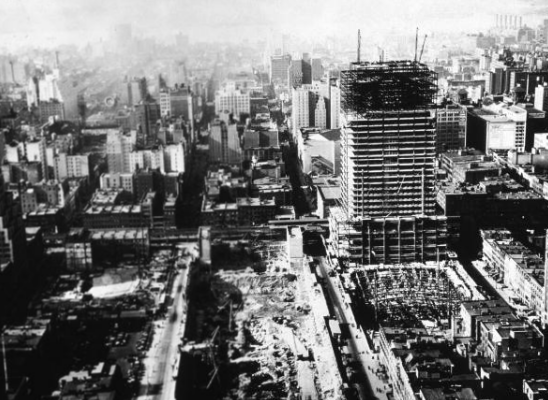

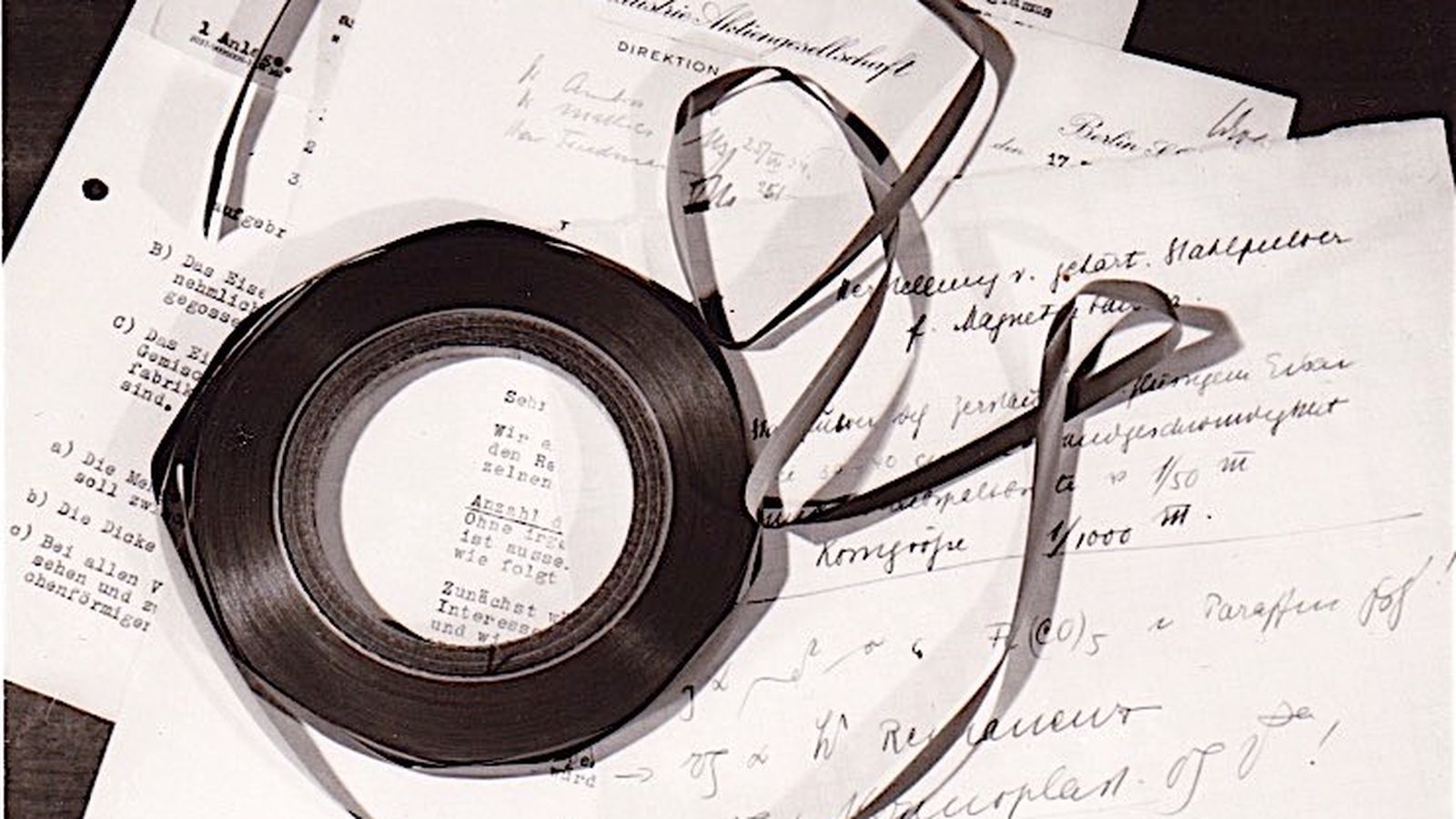

Posts in Category: TV History
Page 23 of 136
« Previous
1
2
3
4
5
6
7
8
9
10
11
12
13
14
15
16
17
18
19
20
21
22
23
24
25
26
27
28
29
30
31
32
33
34
35
36
37
38
39
40
41
42
43
44
45
46
47
48
49
50
51
52
53
54
55
56
57
58
59
60
61
62
63
64
65
66
67
68
69
70
71
72
73
74
75
76
77
78
79
80
81
82
83
84
85
86
87
88
89
90
91
92
93
94
95
96
97
98
99
100
101
102
103
104
105
106
107
108
109
110
111
112
113
114
115
116
117
118
119
120
121
122
123
124
125
126
127
128
129
130
131
132
133
134
135
136
Next » June 1, 1980…CNN Debuts As The First All News Network
On June 1, 2016
- TV History
June 1, 1980…CNN Debuts As The First All News Network
36 years ago today, The Cable New Network went live at 5 PM with anchors Lois Hart and Dave Walker after a brief dedication ceremony from Ted Turner…you can see the first hour here.
Below are photos from our friend Jeff Jeffares taken in the days leading up to the sign on. Jeff is at the TD position (closest) in the color photo and helped install the Grass Valley 1600 shown here in the box, and the four RCA TK47s. Happy Birthday CNN! -Bobby Ellerbee
May 30, 1949…WFBM Signs On With 10 Camera Indy 500 Coverage
On May 30, 2016
- TV History
May 30, 1949…WFBM Signs On With 10 Camera Indy 500 Coverage
Operating now as WRTV, what is now Indiana’s oldest TV station, signed on the air on May 30, 1949 under the call sign WFBM-TV with a film documentary entitled “Crucible of Speed”, covering the history of the Indianapolis 500.
Here’s where it gets interesting…that documentary was followed by the inaugural live television broadcast of the now famous race, with the 10 custom cameras the WFBM engineers had built for the occasion. About half were later sold to area stations.
If anything is a 10 camera shoot, it’s the Indy 500! Kudos and congratulations to those engineering pioneers. -Bobby Ellerbee
NBC New York: Radio City TV Studios & Theaters Chronology 1935 -1956
On May 29, 2016
- TV History
NBC New York: Radio City TV Studios & Theaters Chronology 1935 -1956
This is the first ever, known, chronological listing of the conversions of NBC’s Radio City studios. Included in this exclusive Eyes Of A Generation time line, are the outside performance theaters, and their conversion dates to NBC Television theaters. This compilation gives us the clearest and most concise guide yet to the production and technical operations of television’s early days, and the network that pioneered so much of the new medium.
As we have only recently learned, many shows were done as “remotes” in NBC radio studios with in-house mobile camera units, and predate the official conversion date which signifies when each studio had a major overhaul to install lights and control rooms.
For instance, it is known that “The Voice Of Firestone” was telecast locally from 8H as early as 1943. It was first seen on the NBC Television Network in April 1944 and continued occasionally until January 1947, as an in-house remote as 8H was not converted till 1950, and with the size of the orchestra and audience, that was NBC’s only studio big enough to handle the show.
Eyes Of A Generation, would like to offer a huge thanks to the many past and present NBC people that helped, but most especially to Frank Merklein (NBC 1947-1961) Joel Spector (NBC 1965-2001), Dennis Degan (NBC 2003 to present), historian David Schwartz (GSN) and Gady Reinhold (CBS 1966 to present) for their first hand knowledge and help. Bobby Ellerbee
1st Television Facility and 1st Studio Converted
Studio 3H…1935 (Became 3K September 12, 1955):
3rd Floor, 30 Rockefeller Plaza (Converted from Iconoscope cameras to Image Orthicon cameras around April of 1946. “Howdy Doody” was done here).
2nd Television Facility
5F… Film/Telecine 1936 : 5th Floor, 30 Rockefeller Plaza
2nd Conversion and 2nd Studio
Studio 8G…April 22, 1948 : 8th Floor, 30 Rockefeller Plaza
(First broadcast May 9, 1946 when it was still a radio studio, show was “Hour Glass”).
3rd & 4th Conversion and 3rd & 4th Studios
Studios 3A and 3B… Summer of 1948 : 3rd Floor, 30 Rockefeller Plaza (3B used before 3A. “You Are An Artist” with Jon Gnagy, and “Television Screen Magazine” were the first shows from 3B, in November of 1946).
5th Conversion and 5th Studio
Studio 6B… June 8, 1948 : 6th Floor, 30 Rockefeller Plaza
(First broadcast June 8, 1948, “Texaco Star Theater”).
6th, 7th & 8th Studios (Studios A, B and C, F was film/telecine)
Uptown Studios December 1948 : 105 E 106th St
(NBC announced the Dec 48 opening in a “year end wrap up” press release. “Camel News Caravan” came from Studio C).
9th Studio
International Theater…January 29, 1949 : 5 Columbus Circle
(First regularly scheduled broadcast of “Chesterfield Supper Club” with Perry Como, September 8, 1949. January 29,1949 debut of “Admiral Broadway Review”, this was also the home of “Your Show Of Shows”).
6th Conversion and 10th Studio
Studio 6A…May 29, 1950 : 6th Floor, 30 Rockefeller Plaza
(First use December 24, 1948, fifteen minute simulcast “Chesterfield Supper Club” with Perry Como, first use as TV studio, May 29, 1950 debut “Broadway Open House”).
7th Conversion and 11th Studio
Studio 8H…January 30, 1950 : 8th Floor, 30 Rockefeller Plaza
(November 29, 1943, “Voice Of Firestone”, covered as a remote with Iconoscope field cameras, local WNBT. NBC Television Network did April,1944 VOF remote here. Debut as a TV studio was “Robert Montgomery Presents”. 8H went color in the spring of 1963 when the 4 RCA TK41s from The Ziegfeld Theater were moved here).
12th Studio
Hudson Theater… Sept 25 1950 : 145 W 44th Street
(First broadcast, “Kate Smith Show” debuted Sept 25, 1950. This was also where “Tonight” started, with Steve Allen).
13th Studio
Center Theater…November 25, 1950 : 1230 Sixth Avenue
(Simulcast of ‘Voice Of Firestone’, new home debut after move from 8H for conversion).
14th Studio
New Amsterdam Theater…September 19, 1951 : 214 W 42nd Street (First broadcast April 9, 1950, Bob Hope’s first NBC special, covered as a remote)
15th Studio
Colonial Theater…November 8, 1952 : 1887 Broadway
(“Your Show Of Shows”, one time event November 8, 1952. First live use of NBC’s first color facility, no color burst on broadcast, back and white only except for closed circuit engineering loop. Historic colorcasts did not start till August 30, 1953).
16th Studio
NBC 67th Street Studios (A, B, C, D) 1953-1961 : 101 West 67th Street (First use, WNBT’s local broadcast, “Steve Allen Show” fall of 1953, pre “Tonight”).
17th Studio
Studio 5H…December 1953 (Control Center) : 5th Floor, 30 Rockefeller Plaza (Built for use as an assignable control room and ingest of feeds from multi remotes)
18th Studio
NBC Brooklyn Studio I… November 12, 1954 : 1268 East 14th Street (First use, “Satin And Spurs” color spectacular starring Betty Hutton).
19th Studio
The Century Theater…June 1, 1954 : 932 Seventh Avenue at West 58th Street (Broadcasting Magazine date. First show may have been “Mr. Peepers”. First known broadcast was October 2, 1954 with debut of “Imagine Coca Show” here).
20th Studio
Zeigfeld Theater…Sept 22, 1956 : 1347 Sixth avenue and 54th Street (“Perry Como Show” debuts in color from this newly converted for television theater. A few years later, 1961, Como moved to Brooklyn, and the color cameras went to Studio 8H in 1963).
21st Studio
NBC Brooklyn II…Fall 1956 : 1268 East 14th Street
(First use, “Esther Williams Aqua Spectacular”, November 29, 1956. The famous buried swimming pool, built just for this special was under floor of Studio I).
May 29, 1950: Dual Debut! “Broadway Open House” & NBC Studio 6A
On May 29, 2016
- TV History
May 29, 1950…Dual Debut! “Broadway Open House”, NBC Studio 6A
When 30 Rockefeller Plaza was dedicated in November of 1933, the sixth and seventh floors were empty. The only thing in this space was the raw infrastructure and some work lights, and the elevators didn’t stop there till 1941.
In 1933, television was still in the infant stages, but this space was left empty just in case it decided to grow up, or radio took off. As it turns out, radio took off, and with 8H and 8G the only theater style radio studios in the building, NBC went ahead with plans to build two big radio theaters on six and seven, but with a design eye toward television eventually catching up. World War II was on the horizon, and just a month before Pearl Harbor, 6A and 6B were finished. Perfect timing!
But…the timing wasn’t exactly all due to NBC’s crystal ball! In 1940, an impatient landlord threatened to turn the vacant floors into the worst possible acoustical neighbor of all…a bowling alley, unless NBC followed through on their studio plans.
NBC Radio Studios 6A and 6B began operations in early November of 1941. At this link is RCA’s first article on the new studios. This 9 page description of the mirror image studios includes many rare details of the look, the design and acoustical properties and several one of kind photos. This is from the RCA Review, dated January 1942.
As we now know, before many of the NBC radio studios were converted to television, which meant adding lighting and a control room, NBC had roving in-house mobile units consisting of 3 TK30s each, and mobile lighting. The Camera Control Units were rolled into the studio sound locks, and cables ran to remote trucks in the basement for switching, then back to Master Control.
The first known television show from, then radio studio 6A, was a “Break The Bank” simulcast October 5, 1949. It is possible that some of the “Chesterfield Supper Club”, fifteen minute broadcasts came from here in 1948.
The first broadcast to originate from 6A as a television studio is was the May 29, 1950 debut of “Broadway Open House”. Although it debuted there, I think it moved to 6B soon after.
There is a long list of shows from here, but the stand outs are “Jeopardy” in the 60s, “What’s My Line” and “To Tell The Truth” in the early 70s, and of course “Late Night With David Letterman” from ’82-’93, followed by Conan O’Brien as host. Letterman had been in 6A even earlier hosting the short lived mid morning “David Letterman Show” in 1980.
As for “Broadway Open House”, well, that was television’s first foray into late nights, and the Slate article linked below, will fill you in on a lot of background.
On the photos, I’ll add extra info, so be sure to check those out too. Happy Anniversary to Studio 6A, which has just been renovated, and is the new home of NBC’s new prime-time variety series, “Maya & Marty”. The show, starring Maya Rudolph and Martin Short, debuts on Tuesday, May 31, and promises a frothy mix of sketches, celebrity guests, music and other performances. Enjoy and share! -Bobby Ellerbee
http://www.slate.com/articles/arts/television/2015/05/broadway_open
_house_1950_the_first_late_night_show_was_insane_and_we_ve.html
Although this is the debut night of “Texaco Star Theater” in 1948 in Studio 6B, the debut of “Broadway Open House” in Studio 6A would have looked almost like this, when it debuted 2 years after 6B was converted.
From the 1980s, here is a layout of 6A and 6B.To help you get your bearings, the stage is always to the left end and audience area is always on the right end in both A and B.
May 27, 1972…George Carlin Debuts The Infamous “7 Words” Sketch
On May 27, 2016
- TV History
May 27, 1972…George Carlin Debuts The Infamous “7 Words” Sketch
44 years ago today, George Carlin’s now-legendary, “7 Words You Can Never Say On Television” sketch from the “Class Clown” album, was performed in concert for the first time. It was an instant hit!
A few years ago, Carlin discussed this in an interview for the Emmy TV Legends bio series, and the video is linked above. The 4 minute XXX rated clip is not for the faint of heart, and the list is at 2:57. Carlin’s perspective as a true wordsmith, and his context is fantastic as always.
On his next album, 1973’s “Occupation: Foole”, Carlin performed a similar routine titled “Filthy Words”, dealing with the same list and many of the same themes. Pacifica station WBAI broadcast this version of the routine uncensored on October 30 that year, and a complaint was filed by a listener with the FCC.
Following up on the complaint, the FCC proceeded to ask Pacifica for a response, then issued a declaratory order upholding the complaint. No specific sanctions were included in the order, but WBAI was put on notice that “in the event subsequent complaints are received, the Commission will then decide whether it should utilize any of the available sanctions it has been granted by Congress.”
WBAI appealed this decision, which was overturned by the United States Court of Appeals for the District of Columbia Circuit in a 2–1 decision on the grounds that the FCC’s definition of “indecency” was overbroad and vague, and thus violated the First Amendment’s guarantee of free speech.
The FCC in turn appealed to the Supreme Court. The United States Department of Justice intervened in the case, supporting Pacifica’s argument that the FCC’s declaratory ruling violated the First Amendment, and that it also violated the Fifth Amendment in that the FCC’s definition of “indecency” was too vague to support criminal penalties.
In follow-up rulings, the Supreme Court established the safe harbor provision that grants broadcasters the right to broadcast indecent (but not obscene) material between the hours of 10 pm and 6 am, when it is presumed many children will be asleep. The FCC has never maintained a specific list of words prohibited from the airwaves during the time period from 6 am to 10 pm, but it has alleged that its own internal guidelines are sufficient to determine what it considers obscene.
The seven dirty words have been assumed to be likely to elicit indecency-related action by the FCC if uttered on a TV or radio broadcast, and thus the broadcast networks generally censor themselves with regard to many of the seven dirty words. The FCC regulations regarding “fleeting” use of expletives were ruled unconstitutionally vague by a three-judge panel of the U.S. 2nd Circuit Court of Appeals in New York on July 13, 2010, as they violated the First Amendment due to their possible effects regarding free speech.
At “Saturday Night Live”, some of these words have always had a way of just popping into a live show…especially the F word and here’s a brief F’ing history of those “special” moments.
During a sketch in 1980, Paul Shaffer said “f****n'” instead of “floggin'”; in 1981, Charles Rocket, said “I’d like to know who the f**k did it” during a “Who Shot JR?” parody, and on the same night Prince sang the lyric “Fightin war is such a f****n’ bore”; in 1990, singer Morris Day of The Time said “Where the f**k did this chicken come from?” and Steven Tyler of Aerosmith sang “feedin’ that f****n’ monkey on my back” during their performances.
In 1994, Michael Stipe of R.E.M. sang “Don’t f**k with me” and Adam Horovitz of Beastie Boys sang “So won’t you f****n’ listen” in their performances. In 1997, Norm MacDonald accidentally said, “What the f**k was that?” after flubbing a line during “Weekend Update”. James Hetfield of Metallica sang “F**k ’em man, white knuckle tight” during their performance in 1997. In 2009, Jenny Slate accidentally said, “You know what, you stood up for yourself and I f**king love you for that.” Enjoy and share! -Bobby Ellerbee
The Reason For Experimental TV, Involved Consumer Protections…
On May 26, 2016
- TV History
The Reason For Experimental TV, Involved Consumer Protections…
On July 1, 1941, the era of commercial television began in the US, when NBC’s W2XBS became WNBT and CBS’s W2XAB became WCBW. (Until 1946, network flagship radio, or television stations could not be named after the network).
It may surprise you to know that during the experimental period, the amount, and content of newspaper and magazine advertising by television equipment makers was closely controlled by the FCC, but they had a good reason.
The FCC felt that there was too much difference in the way many companies wanted to push forward, and to keep the public from buying a set that could be obsolete in just a few years, they had to kept a lid on the influence these manufacturers had, via their advertising. It worked.
For instance, RCA wanted to keep the 441 lines scanned per second system they had been using, but Dumont and Philco wanted 600 to 800 lines of resolution.
While trying to throttle back ad claims, the FCC created the NTSC, or National Television Standards Committee, which was made up of members from all the companies. It was their job to settle, for once and for all, just what the standards would be. In March of 1941, they issued their report which which set the standard of 525 lines of resolution, with 30 frames per second, an aspect ratio of 4:3 and audio transmitted via FM.
While we are on the subject of consumer protection, this is the perfect place to take up the importance of the “compatible color” issues that faced the industry, and involved similar problems as the committee had faced with black and white television.
In January 1950, the NTSC was reconstituted to standardize color television. CBS had the mechanical wheel, Field Sequential System, and RCA had the all electronic Dot Sequential System, and as you know, there was a huge fight, and decisions from the courts.
In December 1953, the NTSC unanimously approved what is now called the NTSC color television standard, which is based on the RCA Dot Sequential System. The “compatible color” standard retained full backward compatibility with existing black-and-white television sets, with color information added to the black and white image by introducing a color subcarrier.
As we get closer to July 1, we’ll take a look at more of the history surrounding this giant step in television. Enjoy and share. -Bobby Ellerbee


Picture Parade…A Random Walk Through Some Interesting TV History
On May 25, 2016
- TV History
Picture Parade…A Random Walk Through Some Interesting TV History
There is more on each photo. Enjoy! -Bobby Ellerbee
Believe it or not, these RCA TK41s above were still in service at WRC in Washington in 1972…and why not? They made great pictures.

May 24, 1974…The Last “Dean Martin Show” Aired On NBC
On May 24, 2016
- TV History
May 24, 1974…The Last “Dean Martin Show” Aired On NBC
To celebrate 9 years of first class television, in spectacular living color, here’s an hour’s worth of highlights from Producer/Director Greg Garrison, with a great, rarely seen 8 minutes of Jonathan Winters ad libbing his way through an attic (11:42).
There’s also Lena Horne, Goldie Hawn, Bing Crosby, Don Rickles, Ann Margret, Bob Newhart, Jimmy Stewart, Joey Bishop, Orson Wells, Dom Deluise, Glenn Campbell and more.
It was in the 9th season that the variety show began to morph into the “Celebrity Roast” shows, which ran another 10 years, at first on a weekly basis, and later monthly, and then as specials. Enjoy and share! -Bobby Ellerbee
Just for you, Perples Chermpiern. To cheer you up. Must’ve been hard being the “I’m teeeeeeeellin’!” taddletale kid who had no friends and for the life of hi…
May 23, 1964…And Away We Go…From NYC To Miami Beach
On May 23, 2016
- TV History
May 23, 1964…And Away We Go…From NYC To Miami Beach
Jackie Gleason’s last show from his longtime home, at CBS Studio 50 in New York (now The Ed Sullivan Theater), aired May 23, 1964. After the summer break, the show debuted from The Miami Beach Convention Center on September 26.
Below is a photo of Jackie, and well known gossip columnist Hedda Hopper, on the train from New York to Miami. Gleason had done another famous train trip from NY to LA, and like this one, it was a non stop party all the way. This was not just a press junket though…now, the whole train was theirs and carried the entire show, the crew, writers, their families, and even all their furniture, to the Magic City.
Also shown here is a ticket to the taping of the show in NYC that answers some questions. From 1952 until 1957, “The Jackie Gleason Show” had been live on Saturday nights from Studio 50, with the exception of the 1955 season, which was the famous 39 episode filmed run of “The Honeymooners”.
Ed Sullivan’s Sunday night hit, “Toast Of The Town” had started in 1948 at the Maxine Elliott Theater (also known as CBS Studio 51), but moved to Studio 50 in January of 1953. With Gleason live Saturday nights, and in camera rehearsal Thursday and Friday, that only gave Sullivan all day Sunday to rehearse and camera block. At times, there were some difficulties with such a short time to rehearse for their Sunday night show, but everyone was a pro, and knew what to do, so things worked out.
Gleason went on hiatus from ’57 till his return in ’62 with his Saturday night “American Scene Magazine” show, but by then two things had happened: Sullivan was using both Saturday and Sunday to rehearse, and since Jackie’s departure, videotape had become a standard medium. That meant camera rehearsals were no longer a problem, and unbeknownst to most of his adoring Saturday night television audience, Jackie was going his show “live to tape” on Thursday nights at Studio 50. -Bobby Ellerbee


Television’s Oldest Surviving Color Videotape…May 22, 1958
On May 22, 2016
- TV History, Viewseum
Television’s Oldest Surviving Color Videotape…May 22, 1958
This is the dedication of NBC’s new studios for WRC Radio and TV, it’s owned and operated station in Washington DC. President Eisenhower is on hand for the occasion, as are David and Robert Sarnoff, and many distinguished guests.
NBC’s David Brinkley narrates much of the opening minutes which gives us a good look at Studio A, while Eisenhower is getting a tour of the engineering facilities from Sarnoff.
As you’ll see, mostly from 4:28 – 6:00 and again from 9:30 – 10:30, there are black and white cameras in the studio alongside two new RCA TK41s. Their four black and white cameras are in use mostly to cover the arrival and dignitaries, but when the speakers start, their job is done and the TK41s take over.
At 14:50, Robert Sarnoff pushes a big button to make the switch from b/w to color, which is when the color burst is added to the signal. This rare Quad tape restoration to D-2 digital tape was done by Ed Reitan, Don Kent, and Dan Einstein in July of 2006.
For the behind the scenes story on the restoration and some interesting photos, go to this link…
http://www.quadvideotapegroup.com/EiesnhowerQuadRestoration.htm
Enjoy and share! -Bobby Ellerbee
May 22, 1950…The Start Of Late Night TV…Almost
On May 22, 2016
- TV History
May 22, 1950…The Start Of Late Night TV…Almost
The man circled in this photo is Don “Creesh” Hornsby. NBC’s Pat Weaver choose Hornsby to host network television’s first late night show called “Broadway Open House”. The show was scheduled to debut at 11 PM, on May 22, 1950 from NBC Studio 6B.
In the book “Fight For Tonight,” by Ronald L. Smith, he writes: “Hornsby was the ‘wild and crazy’ man of his day, a cross between Steve Martin and Pee-Wee Herman. He had a penchant for put-on humor and odd slapstick stunts. His antics included magic, piano playing, squirting customers with dry ice and shouting “Creesh!” as he magically pulled brassieres out of women’s blouses, or cranked up a machine on stage that spewed potato chips.”
Hornsby’s local daytime TV show in California had a kind of Pee-Wee’s Playhouse set. There was a lot of thrift-shop garbage strewn around and in moments of hysteria, Hornsby would start talking to a large prop grandfather’s clock – which would talk back.
Bob Hope was a fan of the wild comedian, calling him “a bright new talent, a guy who is going to have a big future.” I think Hope is the person that told Pat Weaver about him, after Pat mentioned he wanted to do a late show. NBC signed him to a five-year contract in April of ’50.
Everything was going well for young Creesh. He was 26, moving to New York with his wife and kids, getting ready for his debut as the host of a late night TV show, but sadly, here is the May 22, 1950 headline from Variety: “Don ‘Creesh’ Hornsby Dies of Polio Attack On Eve of TV Preem.”
The premiere of the show was postponed a week, until May 29th. Guest hosts were called in, and for the first few months, Dumont’s Morey Amsterdam hosted “Broadway Open House” Monday through Wednesday, with Thursday and Friday handled by Jerry Lester.
Lester had recently walked off Dumont’s “Cavalcade Of Stars” over a pay dispute. He had hosted the show in it’s second year, but when he left, a comedian that was totally new to television took over. Lester’s replacement was Jackie Gleason.
Had Don Hornsby have lived, who knows how he may have shaped the future of late nights? To bad we never had the chance to find out. -Bobby Ellerbee


May 21, 1992…Johnny Carson’s Final Guest, Bette Midler
On May 21, 2016
- TV History
May 21, 1992…Johnny Carson’s Final Guest, Bette Midler, 3 Songs
https://www.youtube.com/watch?v=1pH60UR5HAg First 2 Songs
https://www.youtube.com/watch?v=cGh6ZgPZFhs Final Song
On the night before the final show, there could not have been a more perfect final guest, or send off than the one seen here. Most mostly remember Bette’s final song, but before you watch that, watch the first two songs for the context of the night.
“The Divine Mrs. M”, came to the set and presented her “fan letter” as only she could have, which included a song about Johnny, and another with Johnny…the one he wrote. To finish off the night, she sang yet another, with the camera over her left shoulder, watching Johnny. At the end, you see her run off stage just before she bursts into tears. What a night! What a show! What a great a great way to go! More tomorrow… -Bobby Ellerbee
If you want the answer to the trivia question “Who was the final guest of “The Tonight Show” with Johnny Carson?” it would be Bette Midler. That next to last…
May 20, 1939…First Television Picture Sent Over Telephone Lines
On May 20, 2016
- TV History
May 20, 1939…First Television Picture Sent Over Telephone Lines
77 years ago today, NBC sent television images from Madison Square Gardens, to 30 Rockefeller Plaza over AT&T telephone lines. Over the course of the six day bicycle race event, three broadcasts were done, with each being a little better than the last, due to some tweaking along the way by both AT&T and NBC.
This was just three days after television’s first ever live sporting event, the telecast of a college baseball game, which you read about here on May 17th. On June 1, NBC would go on to bring boxing to television for the first time with the Lou Nova-Max Baer fight at Yankee Stadium.
On August 26, Red Barber would call the first ever pro baseball game on television, and on September 30, NBC broadcast the first college football game, followed on October 22, by the first pro football game. Hockey made it television debut on NBC February 25, 1940, and basketball came to TV February 28th, with track and field events debuting on March 2, from MSG.
Remember, all this activity started in April of 1939 with the opening of The World’s Fair, when David Sarnoff told the nation that RCA had “added radio sight to sound”, and officially kicked off the age of television. -Bobby Ellerbee
Leaving Letterman, Part I
On May 20, 2016
- TV History
May 20, 2015…The Final David Letterman Show Airs
In some ways, it seems like this was just yesterday…in other ways, it feels like Dave has been gone for a lot longer. Here, some of the show’s long time staff members talk about how the end came, and their feelings at the time, and after. Although the word “loyal” is not used in this great package, it seems to have been an unspoken rule on both sides of Dave’s desk. Just one of the many things we miss about the show. -Bobby Ellerbee
A behind the scenes look back at the last Late Show with David Letterman on May 20, 2015.
May 19, 1945…Dumont’s W3XYT Signs On In Washington DC
On May 19, 2016
- TV History
May 19, 1945…Dumont’s W3XYT Signs On In Washington DC
With NBC/RCA having come to DC in 1939 with W3XNB, Dumont was the second experimental station in the capitol. In 1947, this became WTTG, and was named after Thomas T. Goldsmith, Dumont’s chief of engineering. Dumont’s first “network” consisted of a linkage from their WABD in New York, to WTTG in Washington.
In ’45, Dumont was still using the Iconoscope cameras, but the big difference between their camera, and RCA’s version of the Iconoscope, was the electronic viewfinder. RCA used a ground glass optical system, which was hard for the cameramen, but at least it streamlined the operation.
As you can see, the Dumont version required both a power supply, and a camera control unit with the camera, which was an awfully bulky situation. Even after the Dumont 134B Image Orthicon camera came about, all three elements were still required to be part of the camera unit, which is the reason for the “milk wagon” pedestal from Dumont. -Bobby Ellerbee


Prime Time Television…1948 And ’49, With My Detailed Notes
On May 19, 2016
- TV History
Prime Time Television…1948 And ’49, With My Detailed Notes
This is just amazing…what you will see here are some of the first ever shows to run in the first real TV season, with all four networks in operation…NBC, CBS, ABC and Dumont. Back then, “networks” with live feeds, were basicly a handful of stations in the northeast, with outlying affiliates able to take shows via kinescope, which is how these clips survived. Oh, and the only network programming was from 7 – 10 PM.
Live network coverage was about to expand, as an NBC VO announces at the start of this, that the midwest network links will be open and operating by Christmas, 1948.
“The Gay Nineties” show was on ABC on Wednesday nights from 8 – 8:30. At 1:50 we see some of an early “Texaco Star Theater” with Milton Berle from NBC’s newly converted Studio 6B. This was the first show to come from 6B after it was converted from radio to television June 8, 1948. The woman with the great laugh is Milton’s mother who was at every show.
Just after that is “The Ed Wynn Show” which NBC did as a remote from The New Amsterdam, before it was converted in 1951.
At 3:32, “The Admiral Broadway Revue” was the first television show produced by Max Leibman, and starred Sid Caesar and Imogene Coca…this is the forerunner of “Your Show Of Shows”, and both were done at The International Theater at 5 Columbus Circle.
More rare footage starts at 4:44 with the intro of “The Fireball Fun For All” starring Olsen and Johnson. This ran one season, and was one of the first shows to come from CBS Studio 52. The assistant director is the legendary CBS director Ralph Levy in his second ever TV job. Levy went on to direct Jack Benny, Burns And Allen and the Lucy pilot. Levy’s first AD job was at the first show done at Studio 52, a summer show called “The 54th Street Revue” that ran eight weeks.
There’s more history at 6:10…”The Chesterfield Supper Club” starring Perry Como, was the first television show to broadcast from NBC Studio 6A. The studio was not converted officially till May 19, 1950. When this was shot, 6A was still a radio studio with a three camera remote unit and very few lights, which you notice here.
More history at 6:50! This is “The Fred Waring Show” from CBS Studio 41 at Grand Central, and this aired on Sunday night, just after “Toast Of The Town” with Ed Sullivan, which then came from Studio 51, The Maxine Elliott Theater.
Remember the opening announcement about the midwest network link up? “Your Show Time” had premiered on NBC’s East Coast stations in September 1948, and began to include NBC’s Midwest stations on January 21.
“Armchair Detective” was a Dumont show done at WABD.
At 9:06 notice the producer title…William Boyd. Boyd was Hopalong Cassidy, and a very smart showman! This show was an hour long and aired on NBC Friday nights at 8, starting in 1949.
“The Lone Ranger” debuted on ABC in September of 1949 and aired at 7:30 Wednesday nights.
Remember the Hungry Jack Biscuit commercials with the “Hungry…Hungry Jack” call? Here’s where it came from…the opening of “The Aldrich Family” at 10:23. This was on NBC at 7:30 Sundays.
At 10:55, one of television’s biggest shows appears…”The Goldbergs”, which was on CBS, and came from Studio 42 at Grand Central. This started in 1949, and aired Monday nights at 9:30. Just after that is another huge CBS show, “Mama” which also started in 1949 and aired Friday nights at 8, against “Hopalong Cassidy” on NBC.
“The Ruggles” began on ABC, November 3, 1949 – a month after the radio hit “The Life of Riley” had moved to television on NBC, and interestingly, that is the next clip…but if you were expecting William Bendix as Riley, surprise…Riley is played by Jackie Gleason! This was his first starring role.
At 13:10 we see the open for “Suspense” which aired on CBS from ’49 till ’54. It was on Tuesday night opposite “The Life Of Riley”.
Finally, the last clip is from “Studio 1”. It was a big hit, and an important early anthology series on CBS, which debuted in September of 1948, and ran 10 seasons ending in 1958. Enjoy and share! -Bobby Ellerbee
#t=514″ target=”_blank”>https://www.youtube.com/watch?v=H6sOTBtcCcA #t=514
Some of the shows that began their run in 1948 and 1949.
NBC’s RARE Gift To Carson On His 10th “Tonight” Anniversary
On May 18, 2016
- TV History
NBC’s RARE Gift To Carson On His 10th “Tonight” Anniversary
Thanks to Glenn Mack, here is a clip (linked above) you have probably never seen…I know I hadn’t until now. This is from the 10th Anniversary show on October 1, 1972. There is more video from this celebration with Jerry Lewis, Dean Martin, Joey Bishop, George Burns, Jack Benny and more at the link below.
I’m not going to tell you what the gift is, but here is a clue…there were three of these in each RCA TK41. Enjoy and share! -Bobby Ellerbee
http://classicshowbiz.blogspot.com/2007/11/tonight-show-with-johnny-carson-10th.html
May 17, 1939…Television’s First Sports Announcer & Baseball Game
On May 17, 2016
- TV History
May 17, 1939…Television’s First Sports Announcer & Baseball Game
On May 17, 1939 NBC broadcast a baseball game between Princeton and Columbia Universities from Columbia’s Baker Field. Two RCA Iconoscope cameras covered the event that was carried on NBC’s experimental station W2XBS in New York. Princeton beat Colombia 2 -1.
The rare color image is that of Bill Stern, the man that called the action on this first ever televised sporting event. It was on purpose that coverage was of the second game of a baseball doubleheader between Princeton and Columbia, because during the first game, they all practiced, and took feedback from 30 Rock on the closed circuit run through.
On September 30, 1939 he called the first televised football game. It was a college game between the Fordham Rams and the Waynesburg Yellow Jackets played at Triborough Stadium on New York City’s Randall’s Island. Fordham won the game 34–7.
NBC hired Stern in 1937 to host a radio show called “The Colgate Sports Newsreel”, as well as Friday night boxing on radio, which made Stern one of the first televised boxing commentators, and the man Dennis James looked up to.
Many say that Paul Harvey copied Stern’s style, and his stories about the famous and odd, which Harvey called “The Rest Of The Story”. Although Stern made no effort to authenticate his stories, in later years, he did however introduce that segment of his show by saying that they “might be actual, may be mythical, but definitely interesting.” Below, is Bill Stern narrating “The Colgate Sports Newsreel”, with guest BABE RUTH. Hear the similarity? Enjoy and share! -Bobby Ellerbee
https://www.youtube.com/watch?v=QD9lTCLDZX4&ab_channel=OleTymeRadioShows
May 17, 1930…Construction Begins On Rockefeller Center
On May 17, 2016
- TV History
May 17, 1930…Construction Begins On Rockefeller Center
Of the 21 buildings on 15 acres in midtown New York, that make up Rockefeller Center, none are more famous than Radio City Music Hall, and the home of NBC…30 Rockefeller Plaza.
In the construction photo, we see in the center, the excavated footprint of 30 Rock. Notice, it is bracketed on the 6th Avenue side by two small buildings, which are still there today. The building on the right is now a 9 West store, but the building on the left was much more important…that was NBC Studio 1H, better know as Hurley’s Bar.
The bar had been here since 1892, and had always done well, even during prohibition when a florist shop was used to disguise the bar and it’s new back door.
In 1930, John D. Rockefeller, Jr. had begun aggressively buying up acres and acres of midtown property, right in the middle of Fifth Avenue’s most exclusive district, for a seemingly implausible project: Rockefeller Center. One by one he purchased buildings from Fifth to Sixth Avenue between 48th and 51st Streets. In the stranglehold of the Great Depression, few property owners could resist the offer to convert real estate to cash.
But among the few were John F. Maxwell, grandson of John F. Boronowsky who owned the three story building (right in photo) at the north end of the block from Hurley’s and, of course, the feisty Irishmen themselves. In June 1931 Maxwell sent word to Rockefeller that he would not sell “at any price.”
Construction began on the gargantuan Art Deco complex on May 17, 1930. The block of 49th to 50th Streets, Sixth Avenue to 5th Avenue was demolished, leaving only the two brick Victorian buildings standing on opposite corners of a devastated landscape.
The RCA Building—70 stories tall—rose around Hurley’s, diminishing the bar building only in height. But nothing in New York City is permanent and in 1979, Hurley’s was sold. Journalist William Safire spoke for New Yorkers in an article mourning the loss. The mahogany bar was removed to a Third Avenue restaurant and, as Nancy Arum wrote in her letter to New York Magazine that year “a pretend old-fashioned bar now stands where the real old-fashioned bar once was.”
The pretend old-fashioned bar took the name Hurley’s and, most likely, tourists never noticed the change. But proximity, tradition, or habit still brought the Rockefeller Center workers and celebrities into the bar until September 2, 1999. That night owner Adrien Barbey served the last glass of beer in the bar that had stood at Sixth Avenue and 49th Street for 102 years.
Hurley’s Bar was just a half a block away from NBC’s studio entrance, making it the nearest watering hole for everyone from stars to stage hands. It became the favorite for radio, television, newspaper, and sports celebrities as well as tourists and midtown workers.
Liz Trotta noted “You never knew who would be standing next to your lifting elbow at Hurley’s. Jason Robards, Jonathan Winters, jazz musicians from the local clubs, “Tonight” show stars, starlets, football players, the lot.”
The night Jack Paar walked off the “Tonight” show, he went straight to Hurley’s and the asked that the phone on the bar…a direct line to NBC, be taken off the hook.
Johnny Carson helped make the Hurley name nationally familiar while he did his show live from Rockefeller Center. It was the bar in all of his Ed McMahon drinking jokes. David Letterman did several on-air visits to the bar. NBC technicians haunted the place so regularly that among themselves it was known as Studio 1H.
Thanks to “Tonight” show lead cameraman, Kurt Decker, I have experienced a sense of the old Hurley’s, at a very similar bar called Playwrights, and have bent an elbow with him at the new Hurley’s too. In honor of today’s 86th Anniversary of Rockefeller Center…Cheers! -Bobby Ellerbee
There is much more here, and on the photos. http://alokv.tripod.com/plan_port/rc519.html


May 16, 1946…70 Years Ago Today, America Met Audio Tape
On May 16, 2016
- TV History
May 16, 1946…70 Years Ago Today, America Met Audio Tape
As a compliment to today’s earlier story on the history of AMPEX, here is a companion article on Jack Mullin, who, on this day in 1946, stunned attendees at the annual Institute of Radio Engineers (IRE) conference in San Francisco.
There, with a captured German Magnetophon, switching between a live jazz combo and a recording of the group, literally asked the question “Is it live or…?” None of the golden ears in the audience could tell. It was America’s first public demonstration of audio tape recording. Enjoy and share! -Bobby Ellerbee
Tape recording was introduced 70 years ago today
A case of insomnia led to the introduction of tape recording — and, by extension, the entire home media business.
Page 23 of 136
« Previous
1
2
3
4
5
6
7
8
9
10
11
12
13
14
15
16
17
18
19
20
21
22
23
24
25
26
27
28
29
30
31
32
33
34
35
36
37
38
39
40
41
42
43
44
45
46
47
48
49
50
51
52
53
54
55
56
57
58
59
60
61
62
63
64
65
66
67
68
69
70
71
72
73
74
75
76
77
78
79
80
81
82
83
84
85
86
87
88
89
90
91
92
93
94
95
96
97
98
99
100
101
102
103
104
105
106
107
108
109
110
111
112
113
114
115
116
117
118
119
120
121
122
123
124
125
126
127
128
129
130
131
132
133
134
135
136
Next » 